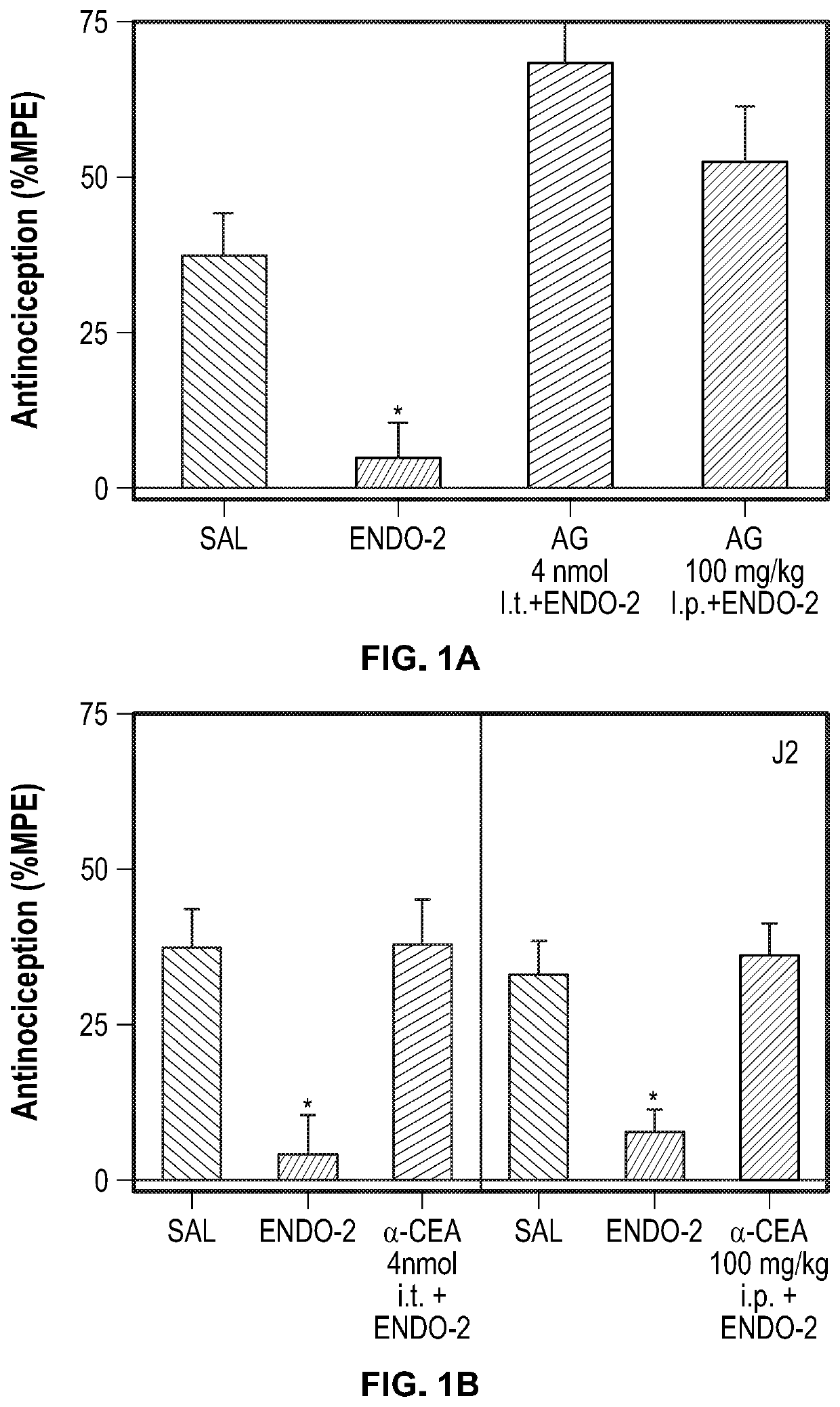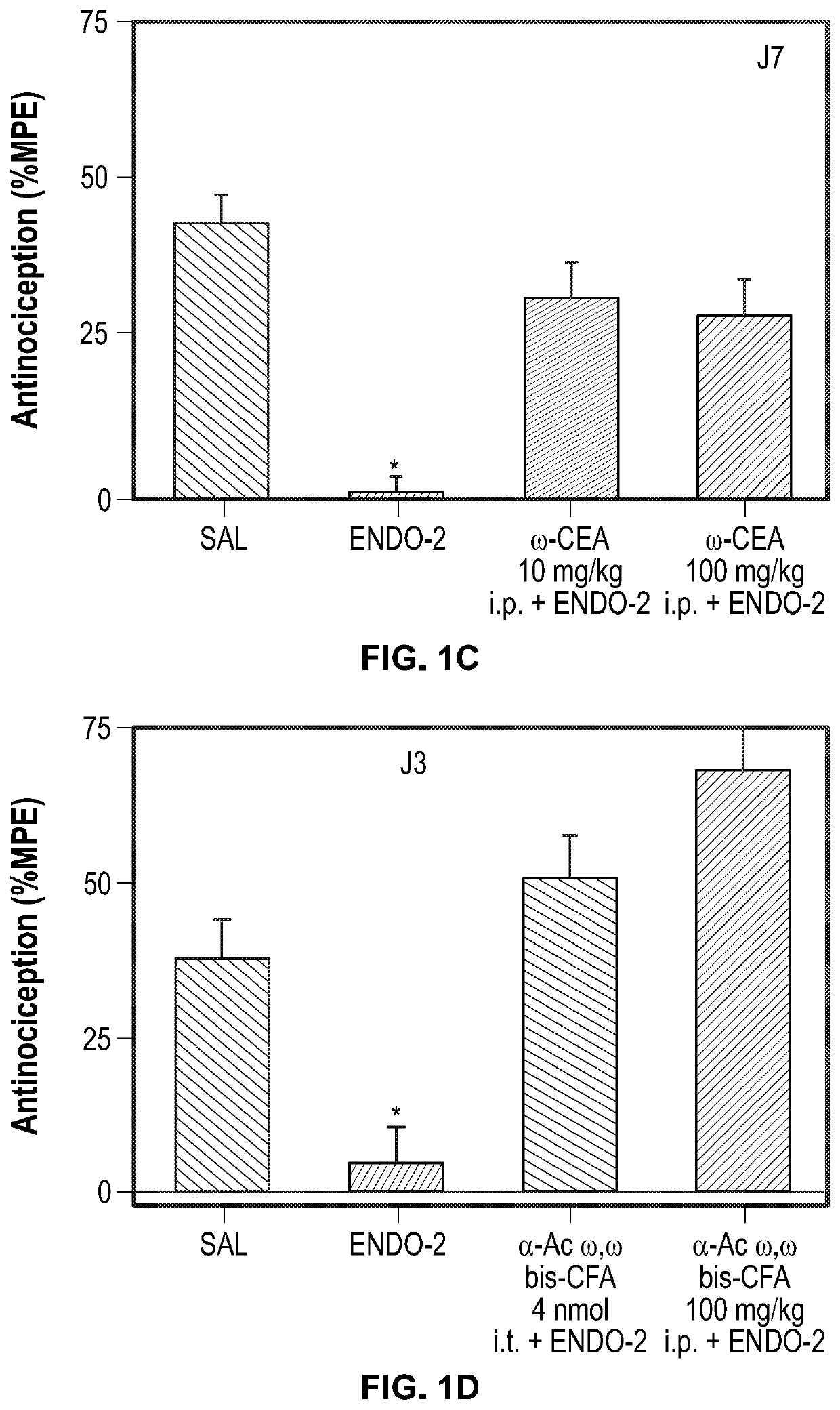Analgesic and Anti-addictive compositions for treatment of chronic pain and opioid addiction
analgesic and anti-addictive composition technology, applied in the direction of drug compositions, organic chemistry, nervous disorders, etc., can solve the problems of increasing the options of patients in need of chronic treatment for pain control, reducing the enthusiasm of doctors and patients for chronic pharmacological treatment with opioid receptor agonists (the most effective analgesics) and nsaids (the most widely used analgesics), and reducing the effectiveness of chronic treatment. , the
- Summary
- Abstract
- Description
- Claims
- Application Information
AI Technical Summary
Benefits of technology
Problems solved by technology
Method used
Image
Examples
example 1
Synthesis of Formula I Compounds
[0143]Synthesis of J-1
[0144]Ethyl Phenyl Carbonate 3 (Shobana, N.; et al, (1988) Ind. J. Chem. (B Org. Med.), 27B:965-966). Phenol 1 (9.4 g, 100 mmol) was reacted with ethyl chloroformate 2 (7.3 g, 67 mmol) in pyridine (5.3 mL) and toluene (100 mL) for 12 h at room temperature. Water (5 mL) was added, and then the organic layer was separated, washed with a HCl solution (5%, 5 mL), a NaOH solution (50%, 5 mL), and water. After drying over Na2SO4 the solvent was removed under reduced pressure to furnish 3 in near quantitative yield (11 g) as a colorless oil that was used in the next step without further purification. Compound 3 is also commercially available.
[0145]Ethyl (3-Aminobutyl)carbamate 5 (Shearman, J. W.; et al (2011) Org. Biomol. Chem., 9:62-65). To a solution of putrescine, butane-1,4-diamine 4 (4.74 g, 53.3 mmol) in absolute ethanol (65 mL) was added dropwise a solution of 3 (8.85 g, 53.3 mmol) in ethanol (10 mL). After stirring at room tempe...
PUM
| Property | Measurement | Unit |
|---|---|---|
| Volume | aaaaa | aaaaa |
| Density | aaaaa | aaaaa |
| Density | aaaaa | aaaaa |
Abstract
Description
Claims
Application Information
 Login to View More
Login to View More - R&D
- Intellectual Property
- Life Sciences
- Materials
- Tech Scout
- Unparalleled Data Quality
- Higher Quality Content
- 60% Fewer Hallucinations
Browse by: Latest US Patents, China's latest patents, Technical Efficacy Thesaurus, Application Domain, Technology Topic, Popular Technical Reports.
© 2025 PatSnap. All rights reserved.Legal|Privacy policy|Modern Slavery Act Transparency Statement|Sitemap|About US| Contact US: help@patsnap.com



